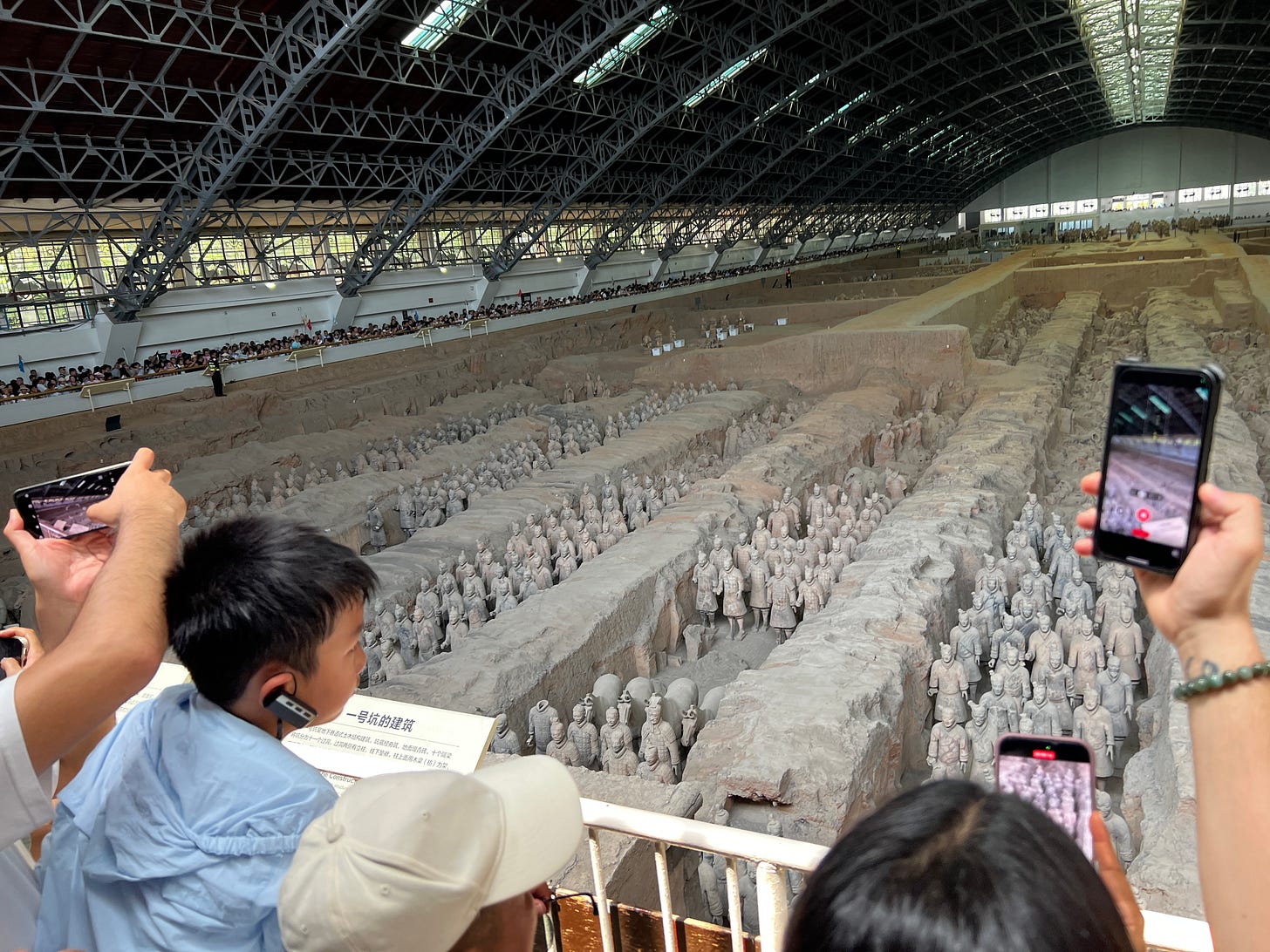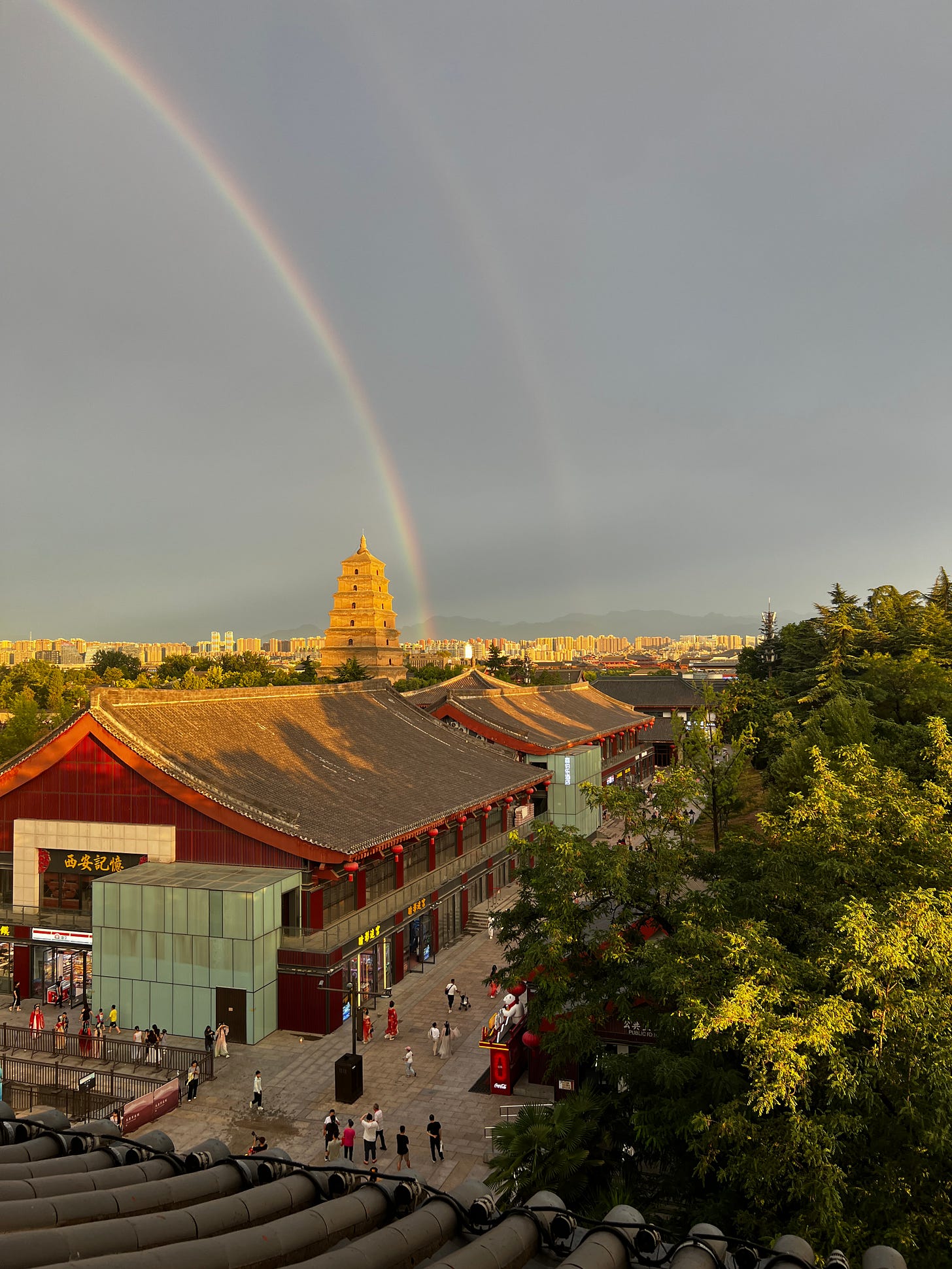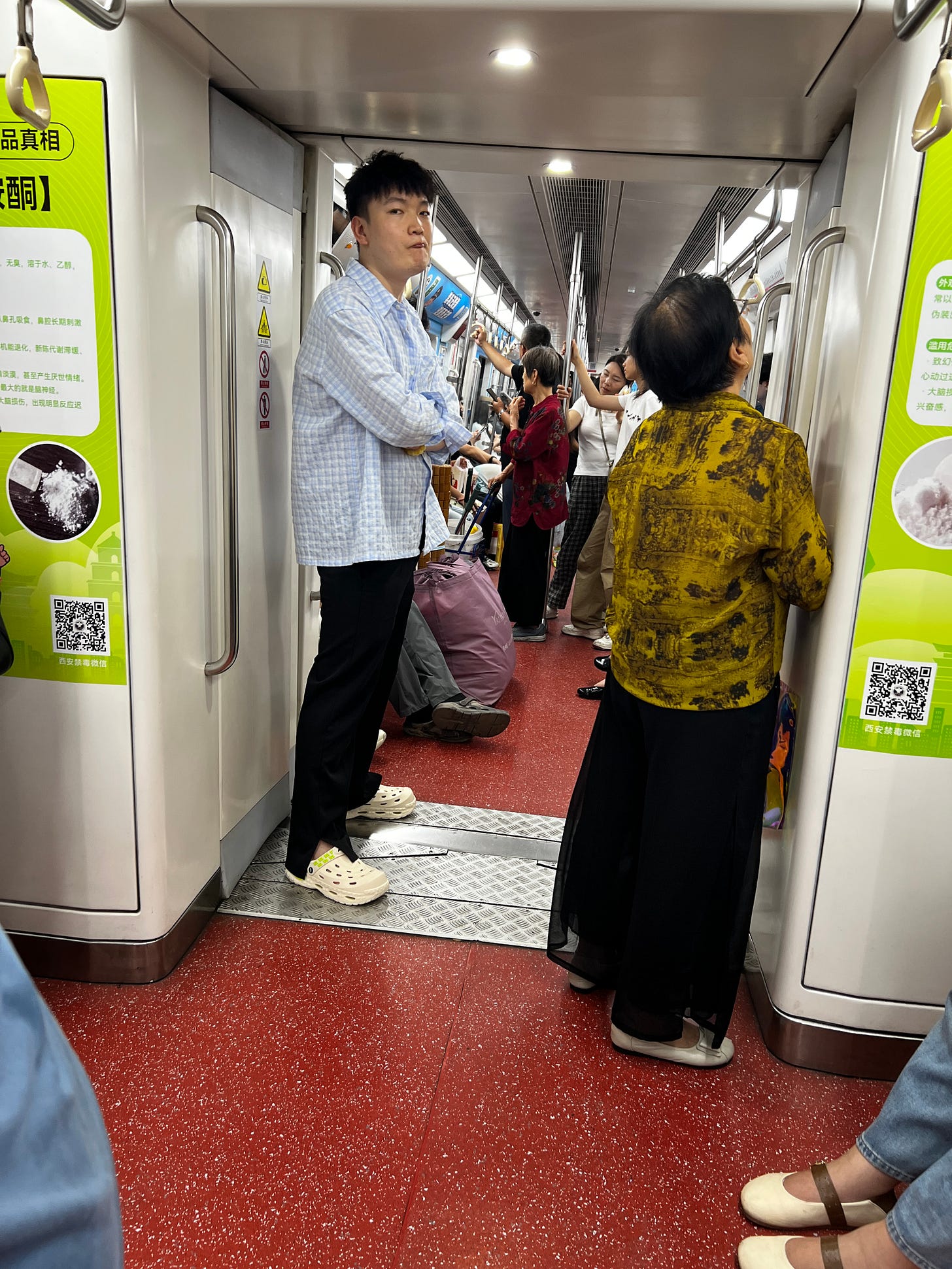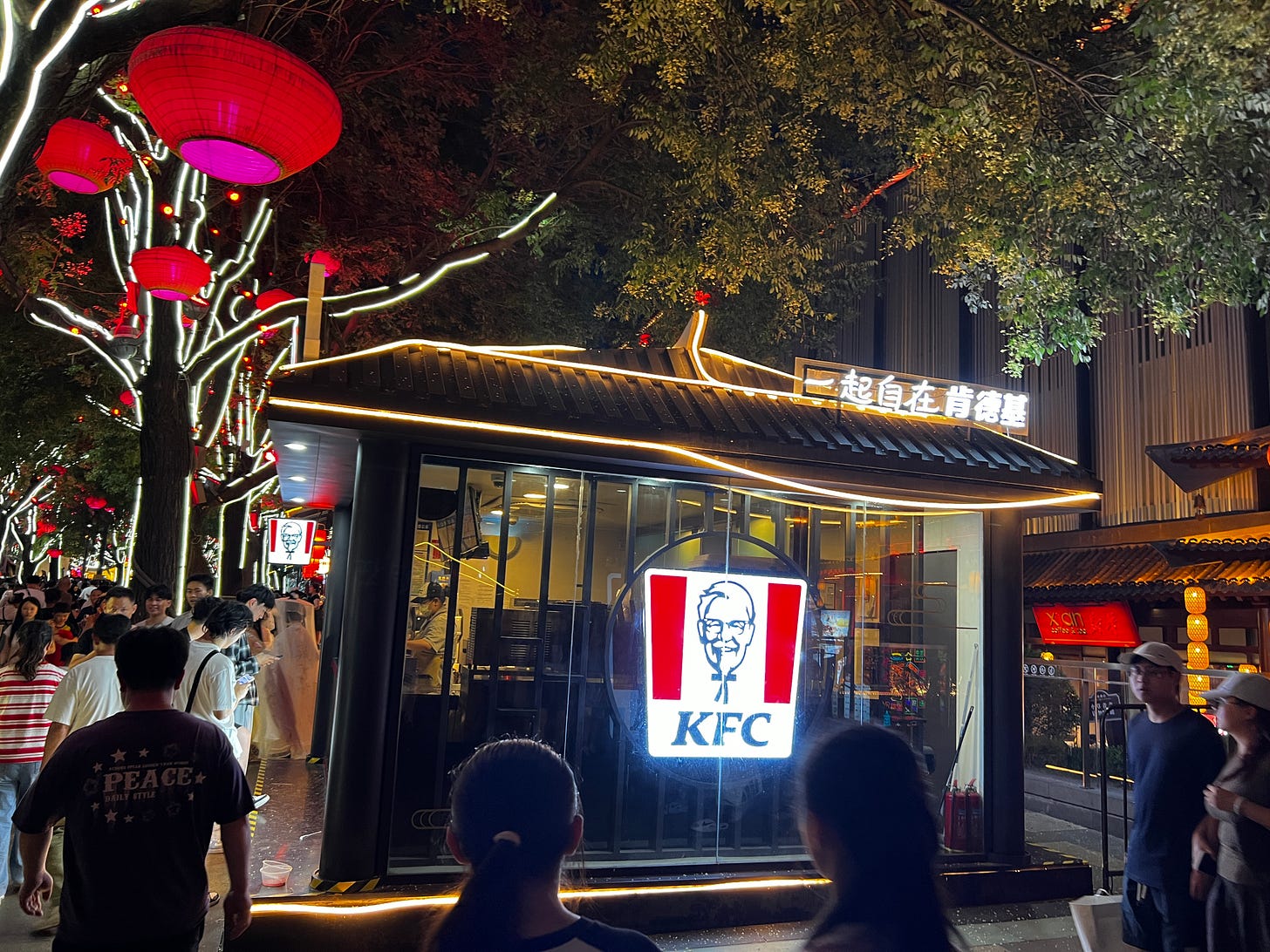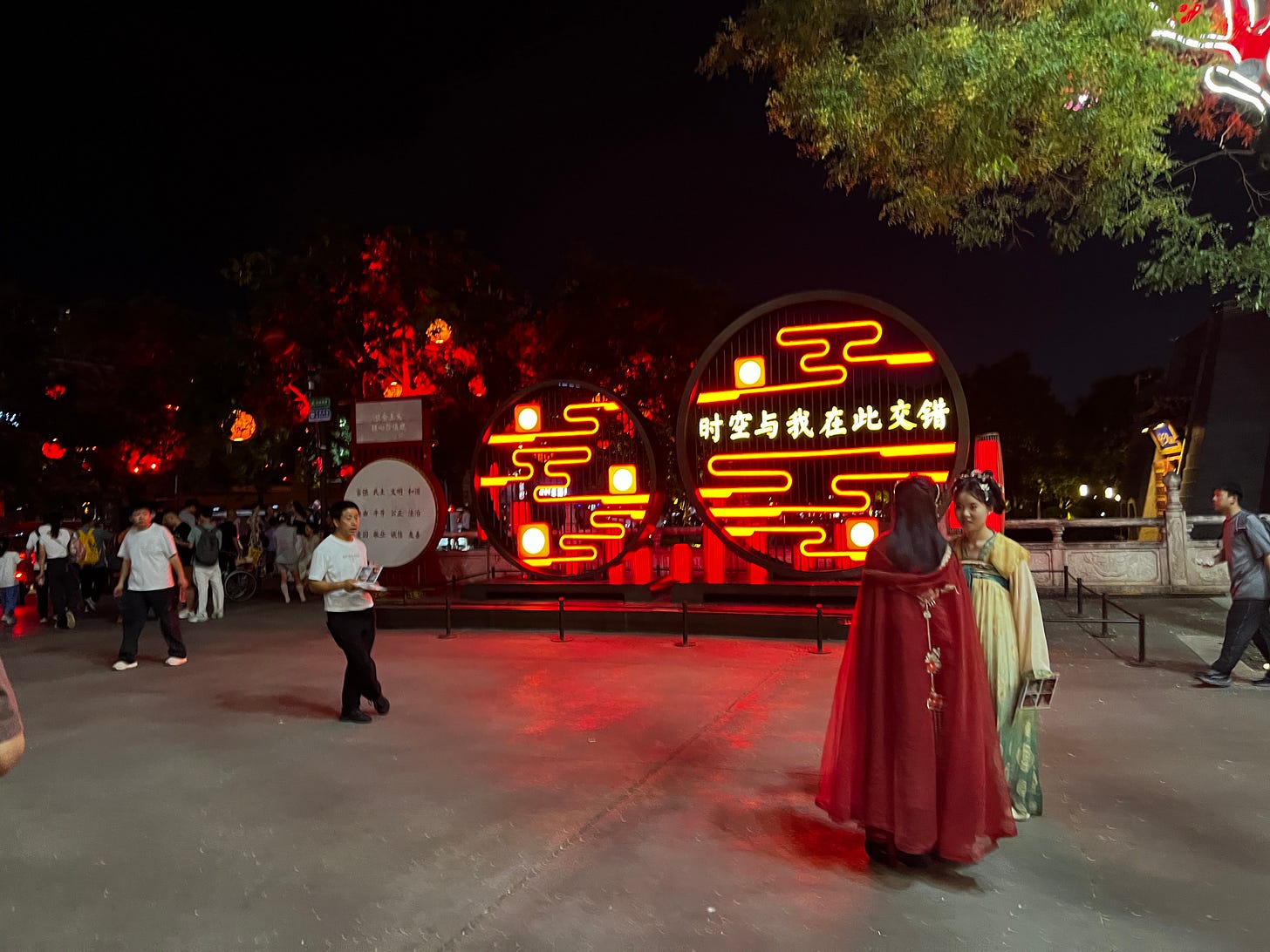Observations of Xi'an
Impressions of Chang'an
I was recently in Xi’an, a city better known for its imperial legacy and underground armies than its transport systems. The Xi’an airport was vast and overbuilt for current demand, which is better than the alternative. China Eastern got us there without incident. I was there to attend a conference at Chang’an University, a good opportunity to reconnect with former students, US colleagues, and a cohort of scholars working at the urban edge of Chinese infrastructure. Also: so many banquets, and so many gifts.
The Terracotta Warriors are impressive, and crowded. You have to admire the logistical accomplishment: to build an army just to bury it. We also visited the Bell Tower, Drum Tower, and the Chang’an Impressions performance — a cultural summation aimed squarely at tourists, mostly domestic, complete with coordinated LED-lit dancers and imperial nostalgia.
We intended to visit the Shaanxi History Museum, but the queue during summer holidays was excessive. Down the street, Saga Mall had no line. It offered a multi-storey waterfall fountain, a familiar retail mix, and, in the basement near parking, a small adults-only vibrator store.
The Great Tang Mall near the Big Wild Goose Pagoda was another site of interest — an open-air axial development stretching several kilometers, lined with LED sculptures, light shows, live performances, and imperial iconography. It’s not really a “mall” in any Western sense, but more a curated consumption-and-display corridor. The underlying message is clear: heritage is now a commodity.
The Big Wild Goose Pagoda itself stands just beyond the end of the mall axis. Originally a Tang-era temple tower built to house Buddhist scriptures from India, it now watches over selfie crowds and musical fountains. A thousand years of continuity, plus Colonel Sanders.
WeChat, WePay, No Cash
Payment systems have moved fully into the mobile era. Credit cards are rarely accepted. Cash, even less so. WeChat Pay is the dominant platform, and foreign cards can be linked, although the user interface is unintuitive and flaky. Digital payment feels like a walled garden where you can enter but not move freely. Apple Pay, standard in Australia and most of the US at this point (which still lags) is, though better in every way from my point-of-view (though perhaps not the vendor’s or the government’s_, is not supported.1
This change is total. Even small vendors, street stalls, and taxis expect QR code payments. It's low friction for locals, but for visitors, it’s a system you can enter only partially. In practice, it’s now impossible to function without some form of integration with the local digital ecosystem.
7-Eleven is everywhere. So are dozens of local variants, many of which reproduce the familiar coloured stripe branding. Trademark law appears to operate selectively. KFC is omnipresent. McDonald’s tastes slightly off. Coke tastes exactly the same.
The mall ecosystem still features Western brands, but there is nothing particular western about them to a westerner’s eyes. The United States now trails China in the race not just to produce, but to consume, and to be seen consuming.
Even global fast food chains are domesticated. KFC adapts and multiplies. Starbucks has a strong presence, but it feels peripheral. Shopping centres are anchored less by recognisable brands than by spectacle — water features, elaborate atriums, curated leisure zones.
The Conference
The Third International Symposium on Cities and Sustainable Transportation at Chang
’an University went smoothly. It was, as always, good to talk shop with others who study transport systems from within their local contexts. TRB’s ongoing problems came up often — not surprisingly, as Chinese scholars have seen their engagement with international conferences become both more complicated and more politicized in recent years.
Time Compression
As I wrote about Nanjing back in 2017: “Everything you have ever read about the rapid change in China understates the case.” That remains true. In Xi’an, 75 years of transformation have happened in the last 25. You can feel it in the built form, the transport systems, the payment networks, and the cultural expectations.
The city wears its imperial past openly — the walls, the towers, the pagodas — but it also acts as if the present might be rewritten just as quickly. Every change seems provisional, waiting for the next one.
Hotel
We stayed at the Holiday Inn Xi'an Big Goose Pagoda across the Second Ring Road from Chang’an University (though there was no to get from here to there on foot without using a pedestrian overpass)

This post follows earlier China notes:
FIN
Apple stores appear underwhelmed by foot traffic. The company’s position is visibly diminished — not yet irrelevant, but certainly past its peak. In retail and device culture, domestic platforms and brands have taken over.
Keep reading with a 7-day free trial
Subscribe to Transportist to keep reading this post and get 7 days of free access to the full post archives.


